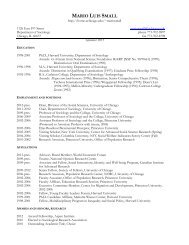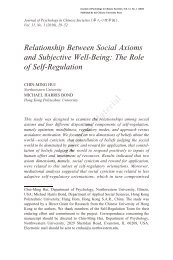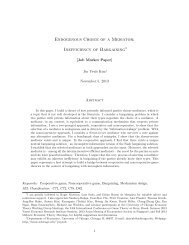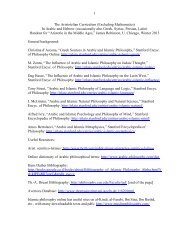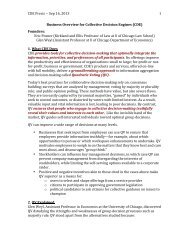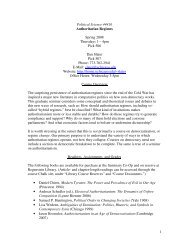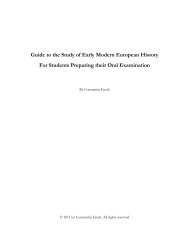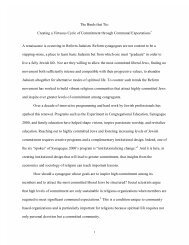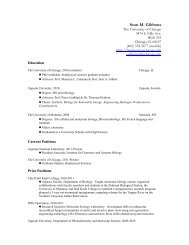Convergence Between Black Immigrants and Black Natives Across ...
Convergence Between Black Immigrants and Black Natives Across ...
Convergence Between Black Immigrants and Black Natives Across ...
Create successful ePaper yourself
Turn your PDF publications into a flip-book with our unique Google optimized e-Paper software.
8 Conclusion<br />
This paper adds to the existing literature on three dimensions. First, it lays out the fact that black immigrants<br />
have become a large part of the black population in the last decades. Second, it demonstrates that the<br />
characteristics of immigrant blacks are very different from those of native blacks. Third, it determines how<br />
much immigrants blacks converge to native blacks across <strong>and</strong> within a generation. To put these patterns into<br />
perspective, they are compared to those of other races/ethnicities.<br />
The share of black immigrants among the black population in the US has increased from 1% in the<br />
1970s to 11% in 2011. <strong>Black</strong> immigrant males’ earnings <strong>and</strong> wages are higher than those of native blacks<br />
but the premium is small once we condition on being employed. Employment, education, incarceration,<br />
<strong>and</strong> marriage outcomes confirm that we are dealing with two completely different subsets of the population.<br />
<strong>Black</strong> immigrants are much more likely than native blacks to be employed, married, highly educated <strong>and</strong> not<br />
incarcerated.<br />
In summary, first generation black immigrants undoubtedly have better labor market outcomes than black<br />
natives. They directly pass on some characteristics such as high human capital investments to the next generation.<br />
The transmission of labor force attachment seems to be weaker, suggesting that the second generation<br />
is converging to natives. <strong>Black</strong> immigrants do not only converge to black natives across generations but<br />
also within a generation. For Asians <strong>and</strong> Hispanics, earnings premia decrease monotonically with age of<br />
immigration. For blacks, the earnings-age of immigration profile is upward sloping for those immigrating<br />
before the age of 15. <strong>Convergence</strong> across generations is mostly driven by low-educated second generation<br />
blacks that drop out of the labor force in greater numbers than low-educated first generation immigrants do.<br />
Similarly, convergence within a generation is driven by the fact that black first generation immigrants who<br />
arrive at an early age have a weaker labor force attachment than immigrants who arrive in the US when they<br />
are older. A social interactions model with an assimilation parameter that varies by age of immigration helps<br />
explain this phenomenon for men. When making their labor force participation decision, male immigrants<br />
generally place more weight on the characteristics of natives the earlier they immigrate.<br />
References<br />
[1] Abramitzky, Ran, Leah Boustan, <strong>and</strong> Katherine Eriksson. 2012. “A Nation of <strong>Immigrants</strong>: Assimilation<br />
<strong>and</strong> Economic Outcomes in the Age of Mass Migration”.<br />
[2] Becker, Gary S., <strong>and</strong> Nigel Tomes. 1979. “An equilibrium theory of the distribution of income <strong>and</strong><br />
intergenerational mobility”. Journal of Political Economy 87: 1153–1189.<br />
[3] Bhattacharya, Debopam, <strong>and</strong> Bhashkar Mazumder 2007. “Nonparametric analysis of intergenerational<br />
income mobility with application to the United States”. Federal Reserve Bank of Chicago WP 2007-12.<br />
20



